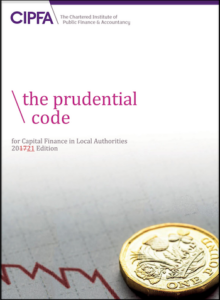It’s been an eventful year for treasury as it adpated to the pandemic and the changing economic landscape. David Blake takes a look at the year’s big treasury events.
2021 has certainly been an eventful year for all, including in the world of treasury management. Treasurers and advisors alike have been juggling potential regulatory changes, volatile gilt markets, varying interest rate expectations and everything in between.
This has presented a wide range of opportunities and risks in both investment and debt strategies. So, with that in mind, lets refresh our memories on the past twelve month.
Economics
On the economic front, 2021 has been dominated by the effects of both coronavirus and the distribution of vaccines. Although the UK was experiencing its third lockdown at the start of 2021, a rapid distribution of vaccines had already begun, and optimism was growing for a return to normality despite the ongoing threat of the Delta variant.
This was reflected in financial markets by the reflation theme, which saw gilt yields climb sharply through February and left negative rate expectations confined to the past.
The removal of social restrictions characterised spring and early summer, providing significant boosts to UK growth rates following the staged re-opening of the economy.

Inflation expectations picked up as global supply chains strained under the pressure of a coordinated rise in demand. Monetary policymakers were at pains to point out that much of this pressure was transitionary and would therefore ease as time passed, a view that eventually appeared to be accepted by financial markets.
However, energy costs surged as autumn approached and pushed inflation fears to the fore once again. Driven by policymaker uncertainty around the threat of more persistent inflationary pressure, rate expectations rose sharply, particularly in the UK.
The risk of higher unemployment had seemingly been averted by the furlough scheme; in fact, the focus was on labour shortages, with the withdrawal from the EU exacerbating the situation.
While economic growth was expected to slow as high inflation eroded household spending, there was a strong expectation the Bank rate would be raised to combat medium term inflationary pressure. The Monetary Policy Committee disappointed markets all but certain of a rate rise in November, although it seemed purely a temporary reprieve.
The onset of winter saw a surge in coronavirus cases in Europe, leading to an increase in social restrictions. Markets appeared little phased, until the Omicron variant emerged.
Anecdotal evidence suggests that UK households and businesses have already reacted to the new variant, and while another year-end lockdown appears less likely, slower economic growth around the start of 2022 is all but certain.
Regulation
2021 has also been an active year in terms of potential changes to the regulatory landscape for local authority treasurers.

CIPFA’s consultations on the Prudential and Treasury Management Codes were the headliners, with the process launched at the start of the year, feedback published in June and a second consultation on the proposed changes issued in September, with the final updated codes expected very soon.
The prudential framework has been under scrutiny again to address continued borrowing by some local authorities for commercial investment purposes, and the new code will make it clear that borrowing for the primary purpose of obtaining a commercial return is not something that local authorities should be undertaking.
One area related to this that generated column inches here, and elsewhere, is the potential inclusion of pooled investment funds within the definition of commercial investments, where they have previously been viewed as long-term treasury investments by most.
Other changes such as the inclusion of proportionality as an objective of the code and the liability benchmark becoming a Prudential Indicator might mean some extra detail added to treasury documentation next year, but for many authorities it will simply be a formalisation of the best practise already being followed.
Room151’s Monthly Online Treasury Briefing
January 28 2022
Online
Public sector delegates – register here
MHCLG, as it was, now DLUHC (Department for Levelling, Housing and Communities) announced plans to improve the capital finance framework for local authorities in England, with worries again stemming from borrowing for commercial activities.
Many of the actions announced were quite general and the most important changes were those relating to legislation, such as with regards to borrowing caps and MRP. So far, it is only on the subject of MRP that the department has issued a consultation, which is open until February 2022.
Borrowing
On the borrowing front, the start of the year was dominated by discussion on new Public Works Loan Board (PWLB) rules from HM Treasury, with initial confusion as to how to interpret the rules lifting as revised guidelines were issued in August. During this period demand for PWLB loans remained subdued, as uncertainty and Covid cash surpluses dissuaded treasurers from pushing the borrowing button.
Lender’s Option and Borrower’s Option (LOBO) loans continued to make headlines. In March a high court judge dismissed a case bought by several authorities against Barclays Bank over LIBOR manipulation. The High Court judge threw the case out, stating it had “no real prospect of success”. LOBO prepayments made a resurgence, with authorities once again shedding these loans to generate savings and reduce risk.

The funding market continued to evolve during the year with the UK government issuing Green Gilts, the Municipal Bond Agency announcing their ESG framework, and proposals for a short-term loan product developed with Arlingclose and backed by commercial paper.
In Wales, the arrival of the General Power of Competence could herald the arrival of innovative funding solutions, perhaps including interest rate swaps.
We saw the introduction of the UK Infrastructure Bank (UKIB) in June. The UKIB is tasked with investment into ambitious infrastructure projects aimed at reducing emissions, helping to move towards a net-zero economy, as well as creating new opportunities across the UK.
As we approach the 31st December 2021 long-term loans and PFI contracts with references to LIBOR now demand attention, with approval required for lender’s to replace references to the outgoing benchmark with SONIA.
We arrive at the end of the year with long-term PWLB at historic lows (at the time of writing), as borrows ponder the odd shape to the yield curve and appraise “liability benchmarks” in anticipation of the revised Prudential Code.
Perhaps the new year will require a few more authorities to consider debt reduction strategies; maybe HM Treasury will consider reducing their borrowing/repayment spread in the context of revised codes, or is that just wishful thinking?
Investors
2021 was also busy year for investors with plenty to reflect on as the year draws to a close.
The European Securities and Markets Authority set out a consultation in March 2021 on potential reforms to EU MMF regulation.
The Low Volatility Net Asset Value (LVNAV) MMF structure is also under discussion as financial turmoil led to many NAVs coming close to breaching their 20-basis point collar. This would have meant any funds that did breach the collar would have converted to VNAV funds, potentially leading to investor losses. The proposed reforms could have significant implications for investors in the coming years, for example increased protection through raising liquidity buffers.
LATIF North
22 March 2022
The Marriott Hotel, Leeds
Lead sponsor: CCLA
Qualifying finance officers can register free of charge here
Local authorities were awash with cash throughout the pandemic thanks to Covid-19 grants from central government. Rates in the “LA to LA” market moved towards historical lows for many durations. At one point, local authorities could borrow one-year money at 0.1%. Many authorities utilised the LA market to fulfil short-term borrowing needs as rates were at such attractive levels, especially compared to other borrowing sources such as the PWLB. As we move towards 2022, there has been a small shift up in local-to-local levels, as grants are repaid and money is taken out of the system
Asset prices rebounded in 2021 as the rollout of global vaccination programmes sparked life back into financial markets and increased investors’ confidence of a strong recovery. However, the Omicron variant has threatened to halt this progress.
Equities (as measured by the FTSE All Share) returned 4.6% in income returns over the 9 months to 2021.
Bond funds, typically seen as a defensive asset class, have generally performed well throughout the pandemic. They (as measured by the Bloomberg Sterling Corporate Value Unhedged GBP) have returned 1.9% in income returns over the 9 months to 2021. However, the current inflationary environment may dampen performance.
Property values bounced back from a tough 2020, May 2021 was the 7th successive monthly increase in capital values. The retail sector continued to struggle but retail warehouses and industrial/distribution assets performed strongly over 2021. Property (as measured by UK IPD income All Property Index) returned 4% in income returns over the 9 months to 2021.
As the year draws to a close, the pandemic has shifted to a more unsettled phase, presenting uncertainty for the year ahead. Although we have more clarity around future policy, the direction of the pandemic will of course affect treasury strategies. However, we remain hopefully that the worst is past us and look forward to a brighter and bolder 2022.
Wishing everyone a happy and healthy new year.
David Blake is a director at Arlingclose.
—————
FREE monthly newsletters
Subscribe to Room151 Newsletters
Room151 Linkedin Community
Join here
Monthly Online Treasury Briefing
Sign up here with a .gov.uk email address
Room151 Webinars
Visit the Room151 channel















